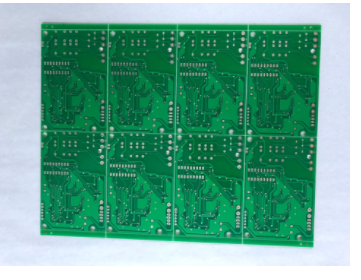Understanding the specific meaning of the Dk value of circuit board materials can reduce design changes
In the development stage of PCB circuit, it usually goes through multiple circuit design iterations, including circuit testing, redesign and reprocessing. These multiple changes may lead to increased costs. It is not uncommon for a project to undergo 4 to 8 changes from development to market launch. The more commonly used method is to use circuit simulation software for accurate simulation, which can greatly reduce the number of changes and related costs.
There are many very good simulation software tools that allow circuit designers to predict the electrical performance of the circuit. All similar circuit simulations are based on circuit models, which are closely related to the impedance and insertion loss of the circuit. Many performances and attributes of the circuit can be obtained through circuit simulation, but the actual circuit performance and the simulation result of the simulation model often have certain differences. Some differences are small; others are very important.
Before entering the data into the simulation software, the designer needs to understand the specific meaning and details of the filled data. Due to the unique expected performance of the circuit, all simulation models are different, so the input data may not exactly match the model. The inaccuracy of the simulation results may be caused by the data entered by the user when defining the model. Sometimes, it may be the user's negligence, or the information that the user believes to be accurate is actually inaccurate. One of the potential inaccuracies is the value of the dielectric constant (Dk) of the PCB material used in the circuit. It is possible that the Dk value itself is accurate, but users may misunderstand the way the Dk value is obtained and what it represents and cause improper use.

The Dk of any dielectric material is related to frequency. In other words, when testing the same material and using the same test method, the Dk value will be slightly different when tested at different frequencies. Usually in the frequency range of a few MHz to 5GHz~10GHz, Dk varies slightly with frequency. For most low-loss circuit materials, the Dk frequency curve has a slight negative slope change from 10 GHz to 250 GHz. Taking into account this frequency range, and according to the polarization of the circuit material, as the frequency increases, Dk usually drops below 2%. For more accurate circuit modeling, Dk data of materials generated at the same frequency as the circuit should be used.
Another problem is anisotropy, which is usually easier to ignore for the Dk value used in circuit simulation. Most circuit materials are anisotropic, which means that Dk has different values on the three axes of the material. It is very common that the Z-axis (thickness direction) Dk of the circuit material is different from the x-y plane Dk of the material. The Dk values of the X and Y axes are usually similar, but the Dk values of the X, Y, and Z axes are usually very different. In addition, there are many Dk test methods for testing materials. Some test methods only evaluate the characteristics of the material on the Z axis, and some methods evaluate the characteristics of the X-Y plane.
If the Dk information used by designers in their model is in the X-Y plane (rather than the Z axis), it may not be suitable for their specific model. It is very helpful to know which test method is used to determine Dk and the test frequency to obtain Dk value.
For most high-frequency circuit board materials, the Dk value is usually around 4 or lower, and the anisotropy is usually not so significant. In most cases, the difference between the Dk value of the Z axis and the X-Y plane is no more than 3%. However, for non-filled glass cloth reinforced circuit materials, the Dk difference may be much higher.
For materials with a higher Dk value (such as materials with a Dk value greater than or equal to 6), the Dk value of the X-Y plane is quite different from the Dk value of the Z axis. For these materials, due to anisotropy, the difference in Dk of the material is usually between 5% and 15% (the actual value depends on the specific material). With some exceptions, some high-Dk materials have very little anisotropy. In any case, designers should consider anisotropy when using materials with higher Dk values.
Finally, the designer should use the Dk value obtained by the test method most similar to the circuit design structure, and the frequency is the same. Due to the limited number of test methods and the wide range of circuit applications, it may be difficult for designers to find a good match between the test method and its model. In any case, the designer should understand and try to use the universal